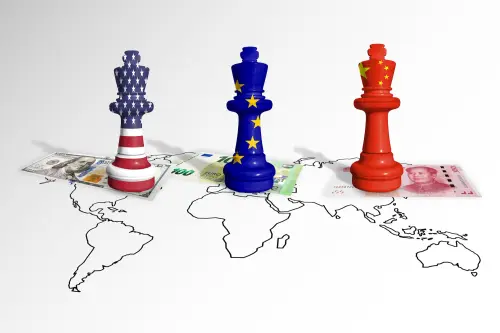This month the U.S. Northeast froze—solid. Arctic blasts swept across Europe. Snow and near-record low temperatures closed schools, caused traffic accidents, and raised fears of powergrid failures, burst water mains and skyrocketing home fuel bills. In New Hampshire, presidential candidates shivered on the campaign trail. Fortunately, this is a temporary phenomenon.
But imagine this extreme cold as the average temperatures one might expect in January in New York, Boston, Paris, Rome and other major U.S. and European cities. This is Russia’s winter burden. Russia has more people in large, cold cities than any other country in the world. Most of them are in the Ural Mountains and extending east into Siberia.
Nearly a dozen Russian cities with populations over half a million have average January temperatures equal to or colder than New York’s near record low of 1F/-17C. This was an anomaly for New York. It is routine for Russia. The coldest temperature recorded in New Hampshire, of -44F/-42C on the top of Mount Washington (a place where no-one lives) was the same as the temperature recorded the same day in Yakutsk, a city of about 200,000 people in Siberia.
These are the kinds of temperatures at which not just water mains break, but standard steel shatters. In Yakutsk, temperatures regularly fall below -58F/-50C in January for prolonged periods of time. The coldest temperature ever recorded outside Antarctica, of -90F/-68C, was recorded in the same region of Siberia as Yakutsk.
Every Russian winter is replete with stories of cities that become virtual refrigerators when utilities fail. All across Siberia, infrastructure buckles and crumbles under the onslaught of the cold. People freeze to death in icy apartments. They die of hypothermia on the streets. The cost of emergency winter fuel deliveries alone to large Siberian cities and remote regions is at least $700 million. Domestic energy prices are heavily subsidized by the government.
This problem of extreme cold and the costs it entails is not simply the fault of Russia’s climate. It is a man-made problem. In the 20th century, Russia did something unprecedented elsewhere in the world. It relocated vast numbers of people from warmer parts of the country to inhospitably cold areas. Millions were moved across the Ural Mountains into the Siberia, initially as slave laborers through the gulag prison labor camp system, then enticed out by higher wages to build Communism on the permafrost. Prior to the Soviet Union’s drive to colonize and industrialize Siberia, none of Siberia’s cities existed on the scale they are today. Siberia’s largest city, Novosibirsk, had only 8,000 people in the last census before the Russian Revolution. Today it has about 1.5 million. Other cities were built from scratch by slave labor around giant industrial enterprises.
Maintaining huge cities in conditions of such extreme cold has become a permanent burden on the Russian economy. It is a drag on growth, and an obstacle to Russia’s integration into the global economy. Millions of people are frozen in place in declining cities with bankrupt industries, rising unemployment, and increasing costs of living.
Administrative residence restrictions in cities like Moscow, lack of savings, poorly developed job and housing markets, and fears of Chinese immigration or even claims against Russian territory, all conspire to prevent people from moving to other, warmer, parts of Russia where they might live and work more productively.
In a matter of days it is always business as usual for New Yorkers and Parisians. Temperatures rise. The Big Freeze is over. But frigid temperatures continue for Russians and Siberians. So does the challenge of keeping the heating and the lights on in Siberia, and helping people move in from the cold. It is a challenge we can appreciate a little more this winter.
The Brookings Institution is committed to quality, independence, and impact.
We are supported by a diverse array of funders. In line with our values and policies, each Brookings publication represents the sole views of its author(s).


Commentary
Op-edSiberian Curse: You Think This Was Cold? Try Yakutsk
January 30, 2004